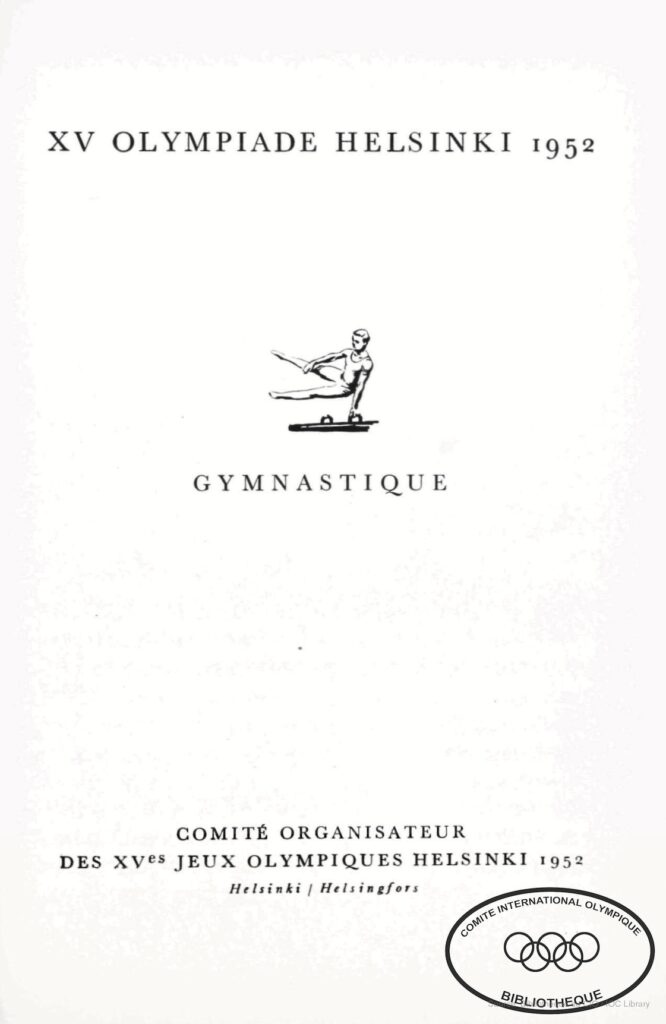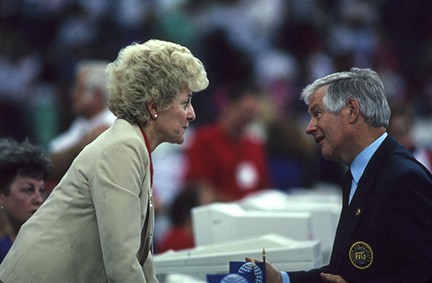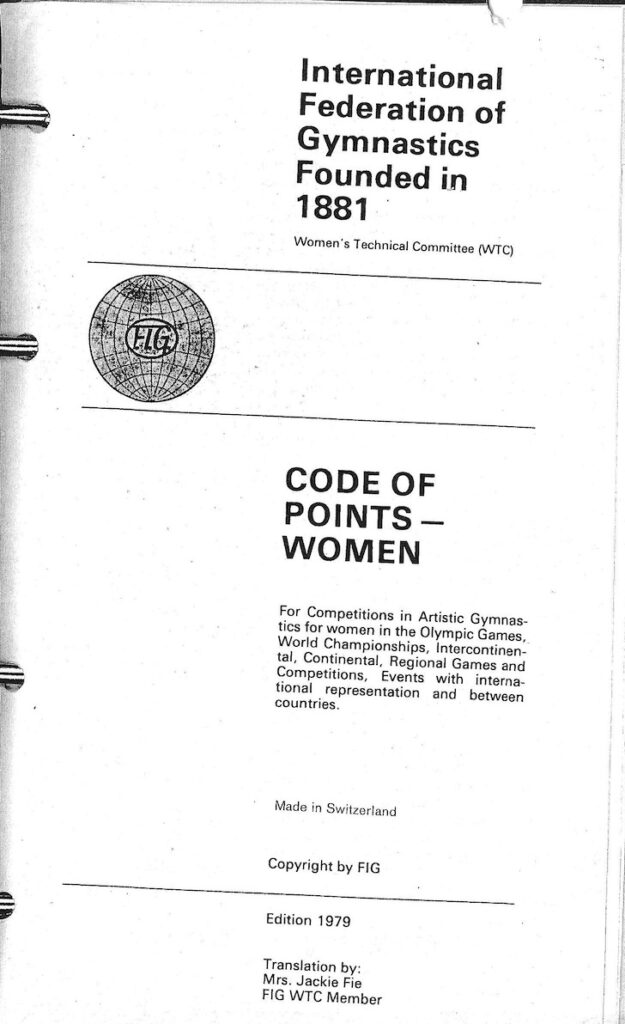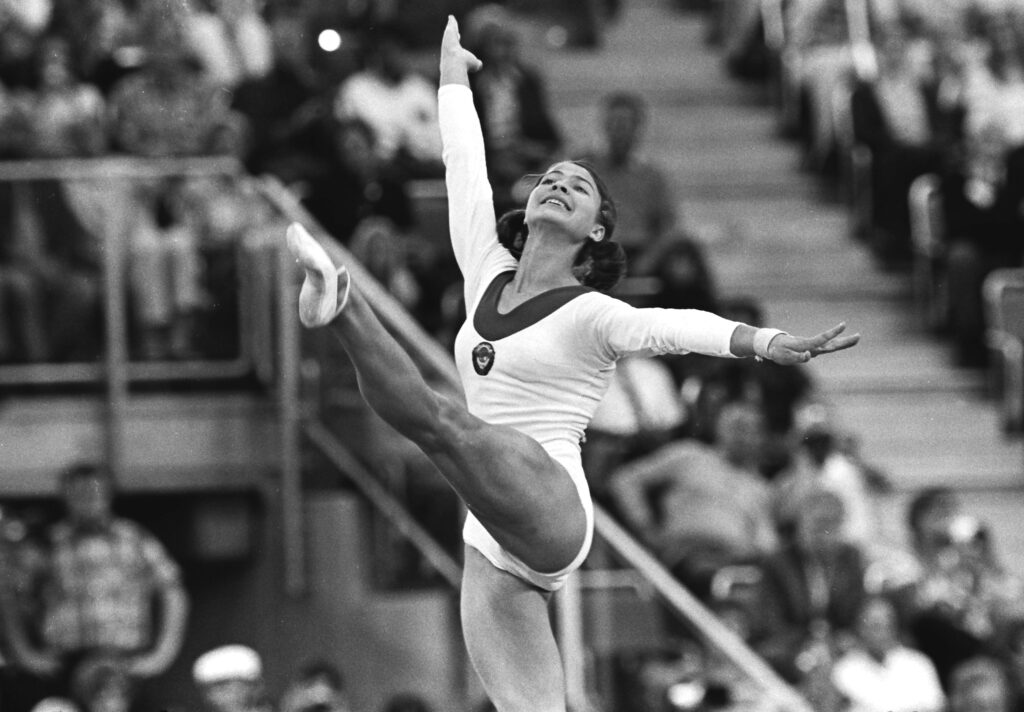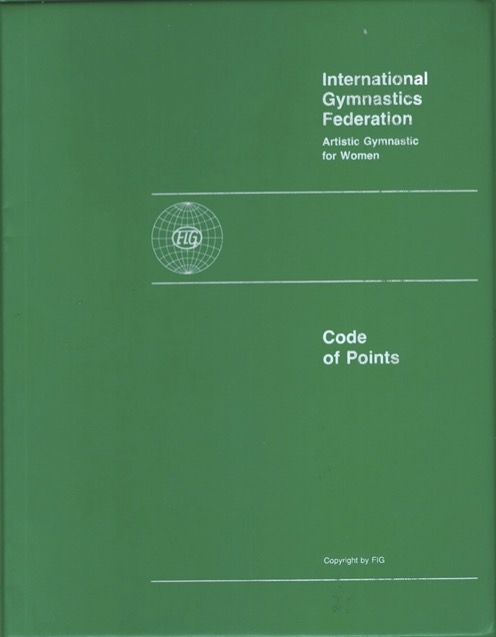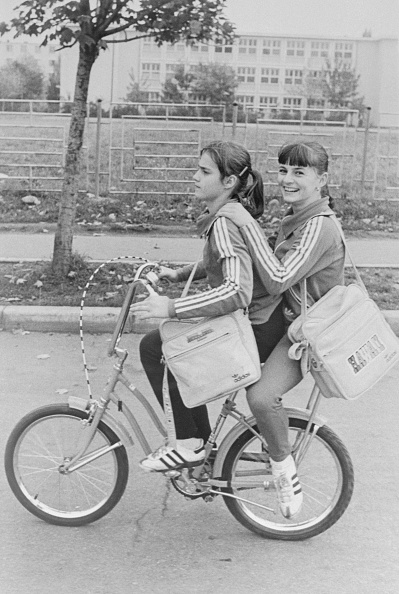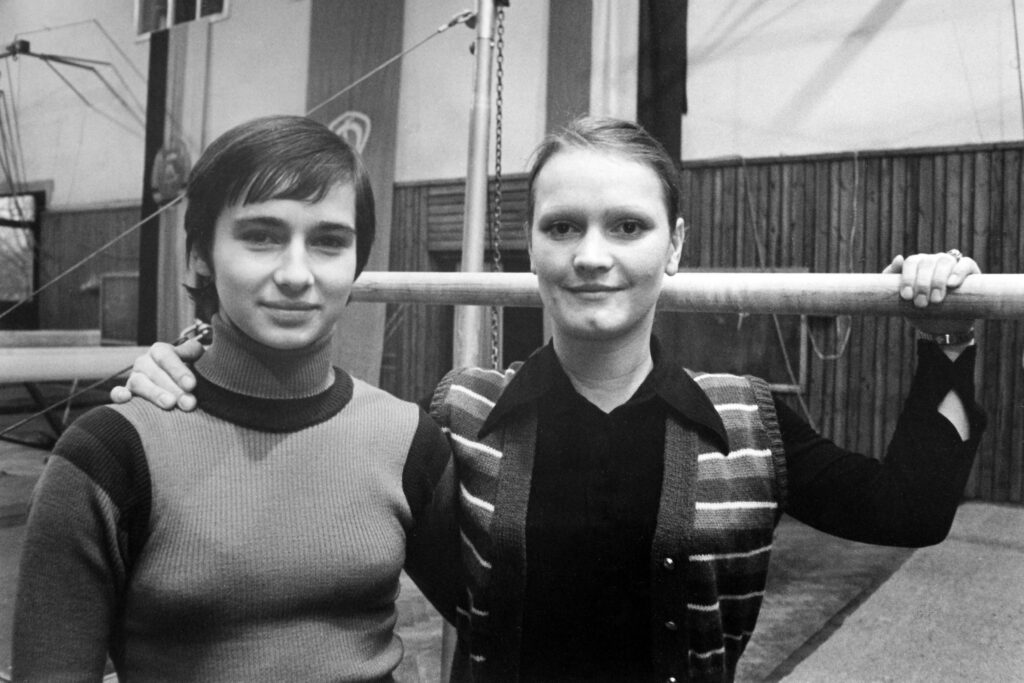In 1952, there wasn’t a Code of Points for women’s artistic gymnastics. The “program” established the rules for participants and judges alike.
It was a different time. While flying rings disappeared after the 1950 World Championships, ensemble routines with portable hand apparatus remained. Those were done to music, but women’s individual floor exercise was performed in silence. Since deductions were not enumerated in the “program,” there was a two-day training course for all judges prior to the competition, and competitors had to rely on their countries’ judges to inform them about how their routines would be evaluated.
Let’s take a look at some of the rules…
